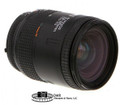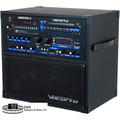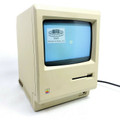 Loading... Please wait...
Loading... Please wait...- Home
- Electronics
- ZENITH Trans-Oceanic, Royal D7000Y-1
- Home
- Rare and Esoteric
- ZENITH Trans-Oceanic, Royal D7000Y-1
ZENITH Trans-Oceanic, Royal D7000Y-1
Sorry but this item is currently unavailable.
Please check back at a later stage.
Product Description
ZENITH Trans-Oceanic, Royal D7000Y-1 Shortwave/AM/FM/MW/WB Radio NEW, REDUCED PRICE AND NO TAX
“Powered to tune in the world”
This vintage Royal D7000Y-1 is a single-conversion, AM/FM/SW/MW/WB portable receiver that runs on 9 D cells (not included) or a built-in multi-voltage supply (AC 115, 230). As with most transistor sets that run on D cells, by the time the batteries are exhausted you probably won’t remember when you last replaced them as battery life is measured in the hundreds of hours with modern alkaline cells. The radio offers a built-in BFO for SSB reception, a tone control, two bandwidths, lighted dial and map lights and a total of 11 reception bands, including VHF and weather. Other improvements over the earlier 1000 and 3000 series included a solid-state (transistorized) design, stronger handle independent of the huge whip antenna, improved chrome plating to eliminate the pitting problems common on the earlier models and an improved battery compartment design. Also, the map compartment cover was changed from silver to black in this final version and the logo on the front cover was re-designed. There are two versions of the Royal 7000 (see model comparison below).

This model with the adopted the continuous coverage design, which, while it did offer reception in some ranges skipped by the band spread models, nevertheless makes tuning of SW broadcasts a bit more difficult. This Zenith with the 500MDR70 chassis also marked the transition from the hand-wired chassis of all earlier models to a printed circuit design. This model is often mistakenly referred to as “The D7000 Taiwan”, but in actuality was built in Chicago, Illinois. This top of the line Royal D7000Y-1 (is often referred to as the last “real” Zenith Trans-Oceanic”) corrected many flaws in the design of the previous 1000 and 3000 series, and it would offer the most performance with enhanced circuitry and exterior design features. This one was produced in the last Trans-Oceanic production run in the United States (ca.1970).
The later model Trans-Oceanic radios had anywhere from eight to eleven bands, started out as A & B battery operated tube type luggables, which was a real innovation for the early forties. The old tube type Trans-Oceanic’s are still sought after; but I prefer the newer transistorized versions. To my mind this has always been the definition of a Zenith Trans-Oceanic radio and these were the peak of a long series, begun in the forties, and ended in the seventies. The whole thing got started through the efforts of Eugene F. MacDonald, (1886–1958) the founder of Zenith. Eugene “Captain” liked cutting edge technology. He also loved spending his time outdoors, in the woods, and especially on the water in his yacht.
If only - Eugene thought - someone made a capable multi band radio that I could take with me and enjoy while camping, boating, traveling, or just relaxing outside. Companies like Motorola made radios that could be installed in cars and run off of cars electrical systems; but these were hardly portables. They were tethered to their car systems, and were very basic AM radios. Eugene wanted something more portable, versatile, and capable. So, he asked his engineers to design and build the radio that he would want to buy a Zenith Trans-Oceanic.
What a concept? No marketing experts, or focus groups, just a guy who decided he would like a certain product to be made for himself, and that perhaps others would want the same thing. This may explain the success and the affection that people had for these radios. The Trans-Oceanic’s were born out of desire, and this fostered affection and loyalty among their users for many years.
Restoration
These are wonderful old radios; but the most recent examples are over forty years old. As such, It might help to think of this as not a single radio. It is a collection of three radios in one case. The SW, FM, and VHF receivers are completely separate radios, which happen to share the same speaker, power supply, and tuning dial. The good news is that because these are over 40-year-old radios, they were designed to be repaired, and are straightforward and relatively easy to work on.
This particular unit from my personal collection was in storage. The first thing I noticed was that it was dirty and the dust had to be removed. In general, it seemed in good shape. No oxide found during examination of the battery compartment. Fortunately, this radio is built in a way so that a leaking battery will not damage any internal components. I was also pleased to discover that the radio still worked off of battery power. The antenna was not bent or broken, the case was not scratched to any degree, the dial was clear, and all the moving parts worked without binding or excessive play. I considered myself lucky as these are the hardest parts of a Trans-Oceanic to be found in good condition. All of the chrome metal trim inserts are in very good shape with no pitting.
Reception is good. The weather band worked perfectly. FM worked perfectly as well. I then tested the unit on SW. Extending the antenna, I was able to get numerous stations, mostly in Spanish, on the 31meter band. I was also able to get WWV at 10MHz and 15MHz, though in both instances it sounded muddy. Things were improved quite a bit when I noticed the RF gain was turned down, and the BFO was on. Resetting this for better sensitivity made a considerable improvement, and reception improved measurably. I also noticed the scale was off by a small amount which was subsequently corrected
Upon initial disassembly, I noticed that one of the wires was not properly connected to the antenna. Before attempting to connect anything, or make any changes beyond a good cleaning, I searched my library for schematics, manuals, and service data for this radio. I then set about making sure I had the proper tools and test equipment for the restoration job at hand. No serious deficiencies were noted so the restoration was completed in a timely manner. Now, it’s time to find this radio a new owner who will appreciate the quality that went into it.
This model with the adopted the continuous coverage design, which, while it did offer reception in some ranges skipped by the band spread models, nevertheless makes tuning of SW broadcasts a bit more difficult. This Zenith with the 500MDR70 chassis also marked the transition from the hand-wired chassis of all earlier models to a printed circuit design. This model is often mistakenly referred to as “The D7000 Taiwan”, but in actuality was built in Chicago, Illinois. This top of the line Royal D7000Y-1 (is often referred to as the last “real” Zenith Trans-Oceanic”) corrected many flaws in the design of the previous 1000 and 3000 series, and it would offer the most performance with enhanced circuitry and exterior design features. This one was produced in the last Trans-Oceanic production run in the United States (ca.1970).
The later model radios had anywhere from eight to eleven bands, started out as A & B battery operated tube type luggables, which was a real innovation for the early forties. The old tube type Trans-Oceanic’s are still sought after; but I prefer the newer transistorized versions. To my mind this has always been the definition of a Zenith Trans-Oceanic radio and these were the peak of a long series, begun in the forties, and ended in the seventies. The whole thing got started through the efforts of Eugene F. MacDonald, (1886–1958) the founder of Zenith. Eugene “Captain” liked cutting edge technology. He also loved spending his time outdoors, in the woods, and especially on the water in his yacht.
If only - Eugene thought - someone made a capable multi band radio that I could take with me and enjoy while camping, boating, traveling, or just relaxing outside. Companies like Motorola made radios that could be installed in cars and run off of cars electrical systems; but these were hardly portables. They were tethered to their car systems, and were very basic AM radios. Eugene wanted something more portable, versatile, and capable. So, he asked his engineers to design and build the radio that he would want to buy a Zenith Trans-Oceanic.
What a concept? No marketing experts, or focus groups, just a guy who decided he would like a certain product to be made for himself, and that perhaps others would want the same thing. This may explain the success and the affection that people had for these radios. The Trans-Oceanic’s were born out of desire, and this fostered affection and loyalty among their users for many years.
Restoration
These are wonderful old radios; but the most recent examples are over forty years old. As such, It might help to think of this as not a single radio. It is a collection of three radios in one case. The SW, FM, and VHF receivers are completely separate radios, which happen to share the same speaker, power supply, and tuning dial. The good news is that because these are over 40-year-old radios, they were designed to be repaired, and are straightforward and relatively easy to work on.
This particular unit from my personal collection was in storage. The first thing I noticed was that it was dirty and the dust had to be removed. In general, it seemed in good shape. No oxide found during examination of the battery compartment. Fortunately, this radio is built in a way so that a leaking battery will not damage any internal components. I was also pleased to discover that the radio still worked off of battery power. The antenna was not bent or broken, the case was not scratched to any degree, the dial was clear, and all the moving parts worked without binding or excessive play. I considered myself lucky as these are the hardest parts of a Trans-Oceanic to be found in good condition. All of the chrome metal trim inserts are in very good shape with no pitting.
Reception is good. The weather band worked perfectly. FM worked perfectly as well. I then tested the unit on SW. Extending the antenna, I was able to get numerous stations, mostly in Spanish, on the 31meter band. I was also able to get WWV at 10MHz and 15MHz, though in both instances it sounded muddy. Things were improved quite a bit when I noticed the RF gain was turned down, and the BFO was on. Resetting this for better sensitivity made a considerable improvement, and reception improved measurably. I also noticed the scale was off by a small amount which was subsequently corrected
Upon initial disassembly, I noticed that one of the wires was not properly connected to the antenna. Before attempting to connect anything, or make any changes beyond a good cleaning, I searched my library for schematics, manuals, and service data for this radio. I then set about making sure I had the proper tools and test equipment for the restoration job at hand. No serious deficiencies were noted so the restoration was completed in a timely manner. Now, it’s time to find this radio a new owner who will appreciate the quality that went into it.
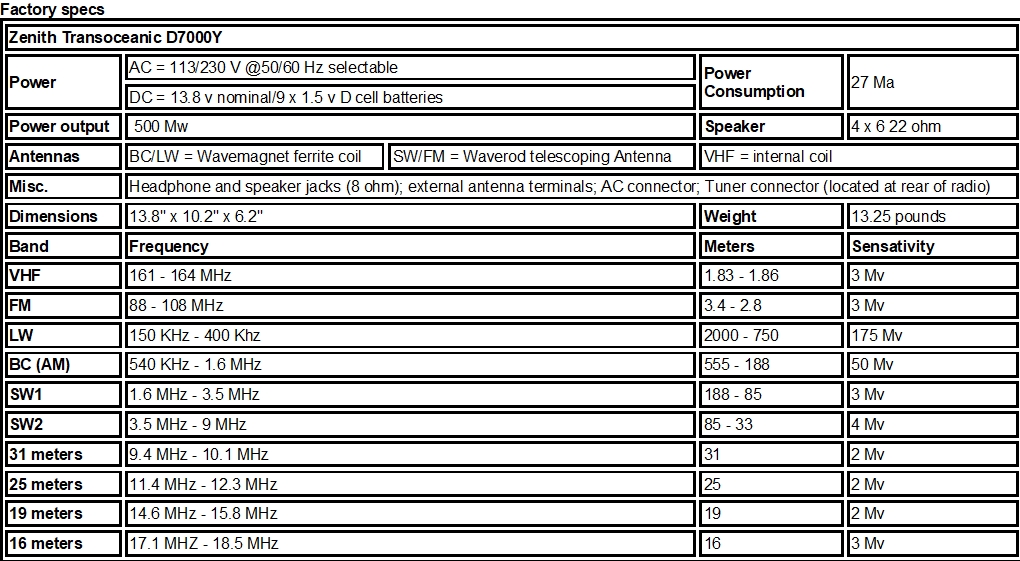
This item is also available for local pickup in Zip Code; 91723. This item does not ship international.
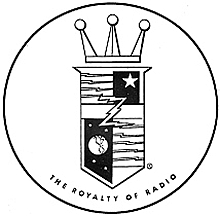
"The Quality Goes In Before The Zenith Name Goes On"

